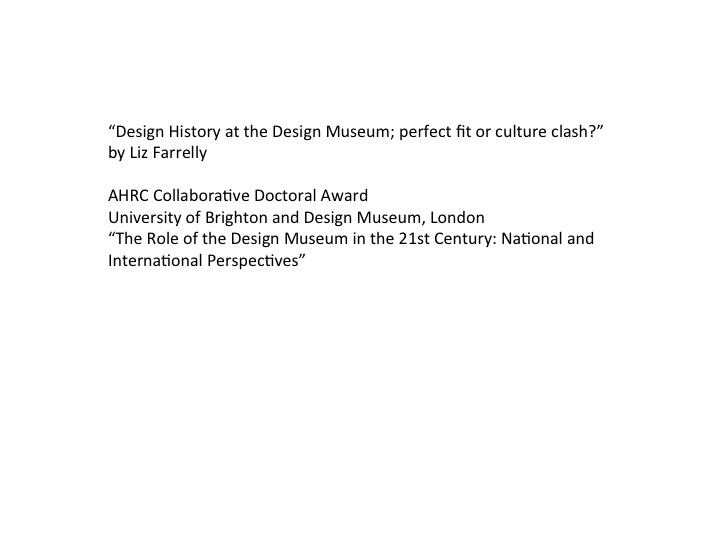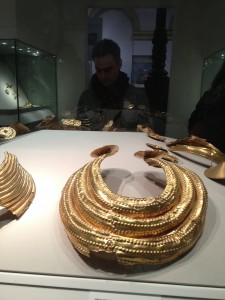40 Years On: the Domain of Design History. Looking Back Looking Forward
The Open University
Berrill Lecture Theatre
Milton Keynes MK7 6AA
22 May 2015
Here’s an edited and slightly expanded version of the paper that I gave; I’d like to thank Dr. Elizabeth McKellar for organising the event and for inviting me to participate. The images are from my PowerPoint presentation.
Since 2011 I’ve been working on an AHRC Collaborative Doctoral Award, which partners University of Brighton with London’s Design Museum, so this paper comes out of a larger work-in-progress and started life as a search for mentions of the Design Museum in academic journals.
A bit of background; from thinking that my application for this award was a random act of “career development”, I’ve come to realise how important the Design Museum (“upper case”, meaning this specific institution [capitalized in this text]) has been to my design-focused career spanning teaching, publishing and curating. I started on an Art and Design Foundation Course in 1982, the year in which the first incarnation of the Design Museum, the Boilerhouse, opened in the basement of the Victoria and Albert Museum. During my Art History degree at University of Sussex it was exhibitions at the Boilerhouse – on Memphis, Issey Miyake, Handtools and British Youth Culture in particular – which enthralled me to design, from the objects on display, to the installation and display, and even the much-maligned white-tiled gallery. While the Director of the Boilerhouse, Stephen Bayley was considered “very bothersome” within the V&A and aimed to discourage people “wandering in from the V&A” (as he put it), I wandered the other way onto the V&A/RCA History of Design MA. Graduating in 1989 just as the Design Museum opened in its new Thames-side location, my work as a design journalist included reviewing exhibition; not always nice, not always nasty. For the last four years I’ve been: invited to nominate for Designs of the Year; observed the goings on in the café (not that this is a sociology of the Design Museum); talked to staff (on and off the record); enjoyed sporadic access to an “under construction” archive; visited every exhibition; dealt with the contradictions of a Supervisor who is also top of my list of “interviewees” and a very busy museum Director; and witnessed the museum prepare for its next phase.
Continue reading









